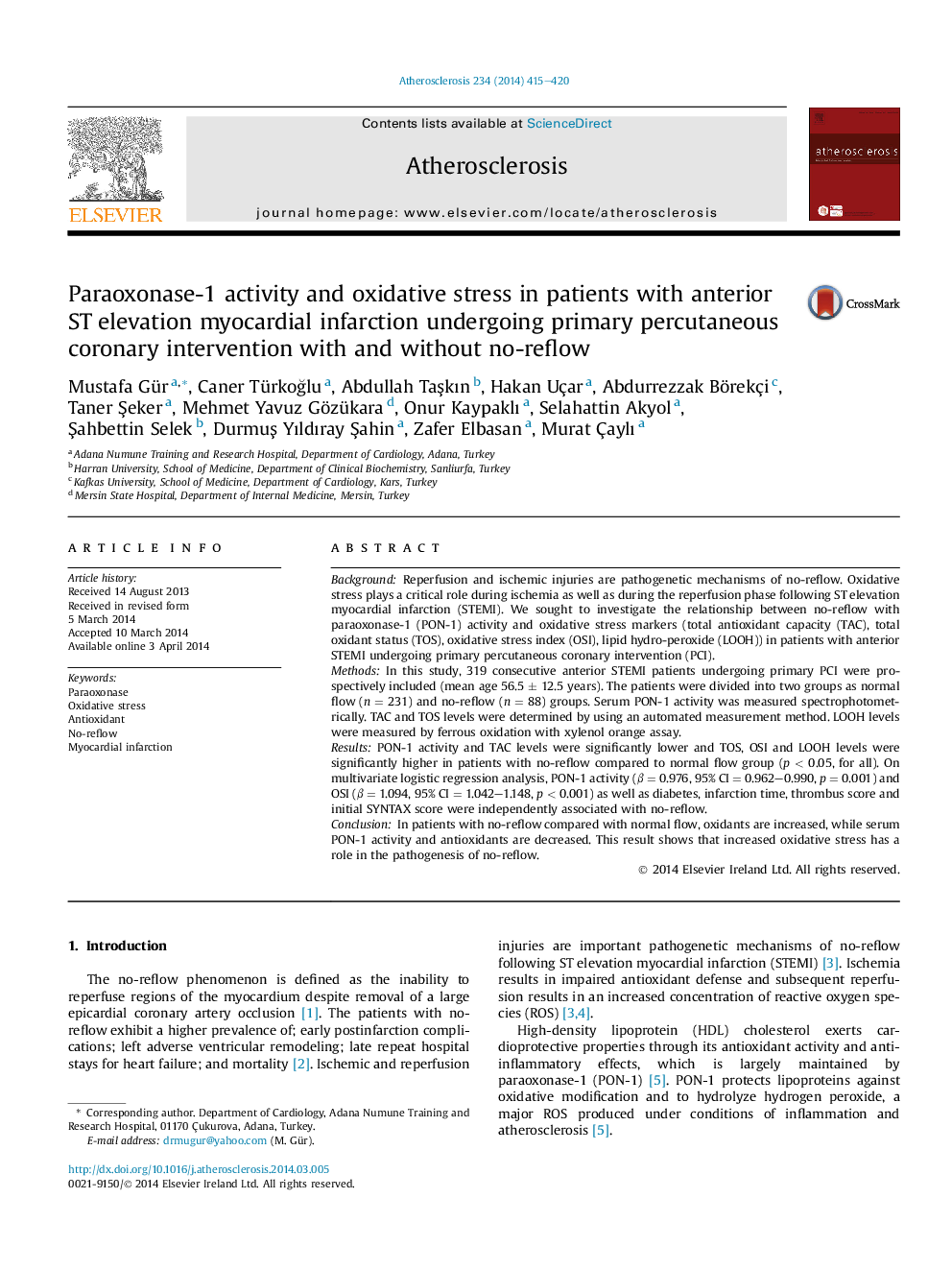| کد مقاله | کد نشریه | سال انتشار | مقاله انگلیسی | نسخه تمام متن |
|---|---|---|---|---|
| 5946738 | 1172361 | 2014 | 6 صفحه PDF | دانلود رایگان |
- ROS and peroxides play a critical role during acute ischemia and reperfusion phase.
- PON-1 protects lipoproteins against oxidative modification and hydrogen peroxide.
- No-reflow was significantly related with PON-1 activity and oxidative stress.
- Decreased antioxidant capacity and increased oxidative stress predict no-reflow.
BackgroundReperfusion and ischemic injuries are pathogenetic mechanisms of no-reflow. Oxidative stress plays a critical role during ischemia as well as during the reperfusion phase following ST elevation myocardial infarction (STEMI). We sought to investigate the relationship between no-reflow with paraoxonase-1 (PON-1) activity and oxidative stress markers (total antioxidant capacity (TAC), total oxidant status (TOS), oxidative stress index (OSI), lipid hydro-peroxide (LOOH)) in patients with anterior STEMI undergoing primary percutaneous coronary intervention (PCI).MethodsIn this study, 319 consecutive anterior STEMI patients undergoing primary PCI were prospectively included (mean age 56.5 ± 12.5 years). The patients were divided into two groups as normal flow (n = 231) and no-reflow (n = 88) groups. Serum PON-1 activity was measured spectrophotometrically. TAC and TOS levels were determined by using an automated measurement method. LOOH levels were measured by ferrous oxidation with xylenol orange assay.ResultsPON-1 activity and TAC levels were significantly lower and TOS, OSI and LOOH levels were significantly higher in patients with no-reflow compared to normal flow group (p < 0.05, for all). On multivariate logistic regression analysis, PON-1 activity (β = 0.976, 95% CI = 0.962-0.990, p = 0.001) and OSI (β = 1.094, 95% CI = 1.042-1.148, p < 0.001) as well as diabetes, infarction time, thrombus score and initial SYNTAX score were independently associated with no-reflow.ConclusionIn patients with no-reflow compared with normal flow, oxidants are increased, while serum PON-1 activity and antioxidants are decreased. This result shows that increased oxidative stress has a role in the pathogenesis of no-reflow.
Journal: Atherosclerosis - Volume 234, Issue 2, June 2014, Pages 415-420
